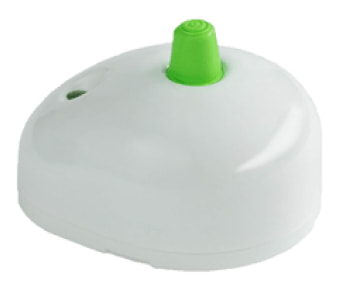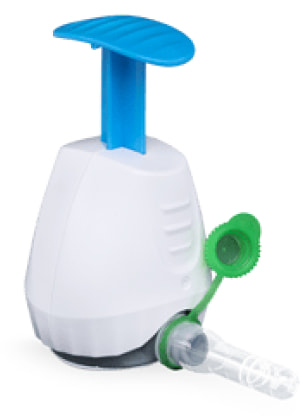-
Blog April 22, 2024
How YourBio Health Came To Be: The Evolution of the TAP® Device
By Jessica Wakefield and Ping GongStarting in 2008-2009, the founders of SeventhSense Biosystems had a vision of making health monitoring as easy as a seventh sense. The idea was to inject microparticles transdermally into interstitial fluid as temporary “tattoos” on the forearm that could change color and would be intuitively and easily seen as one’s health status (biomarker level) changes.
The idea of microparticle-based on vivo health monitoring turned out to be technically challenging, if not impossible, to realize. But the SeventhSense Biosystems story didn’t end there. While trying to access interstitial fluid transdermally for microparticle injection, capillary blood emerged and caught the engineers’ attention, and a concept of an easy-to-use, painless capillary blood collection device was born.
Early device prototypes were created, named, and built in-house. Design started with two sequential activation buttons for firing microneedles and vacuum application for proof-of concept which later evolved into the very first, one-of-a-kind, one-step virtually painless blood collection device called TAP20 (2013). TAP stands for Touch Activated Phlebotomy, and the number 20 specifies the 20 microliter of sample volume that could be used to test blood markers such as HbA1c, creatinine, hemoglobin, and others offered on point-of-care platforms.
While the concept of a one-step, virtually painless blood collection device was new and exciting, its application was limited by the volume of blood collected TAP100 was developed (2014-2016) to meet the needs of a larger blood volume. The one-step, virtually painless features of the TAP20 was carried into the TAP100. A redesign of the microneedle array, inner mechanical and microfluidic features enabled collection of 100 microliters of anticoagulated blood for an expanded panel of tests. This was officially the 1st generation TAP device manufactured at our Medford, MA facility, CE marked as well as 510k cleared by the US FDA for both professional use in 2017 and in 2019 for layperson use.

TAP I
The 1st generation TAP was a breakthrough that offered easy-to-use, virtually painless blood collections needed in clinical and remote settings. However, it did have limitations in the own stream processing of blood samples collected into its integrated, on-board sample reservoir. Accessing the blood sample for testing required a pipette and sometimes training of a lab operator. In addition, as the concept of TAP for remote blood sampling became better appreciated, customers frequently came back to inquire on capability of larger sample volumes. Lastly, there were manufacturing issues that limited the company’s ability to commercialize the product.

TAP II
Parallel to the production, regulatory clearance, and commercialization of TAP, to satisfy both demands of larger sample volume and easier downstream sample processing, the 2nd generation TAP, better known as TAP II, was designed and developed. The TAP II offers an easy to remove detachable sample tube, with collection volumes of 200-300 microliters or more, and multiple sample tube type choices to meet customer needs. The company began to commercialize TAP II , under a new name, YourBio Health, Inc. in late 2022 focusing on the Clinical Trials and Wellness markets while it pursues FDA clearance.
Why was the product developed and what problem is it trying to solve?
The pain associated and inconvenience associated with venipuncture blood and fingerstick sampling, along with the growing demand for decentralized diagnostics, has led to the development of diagnostic tests requiring small volumes of blood or interstitial fluid. Individual are interested in more control over their health and want ability to test when and where they want instead of relying on the brick-and-mortar healthcare system. While blood glucose testing is the most obvious example of this trend, screening for other analytes such as cardiac markers, glycated hemoglobin, and albumin all demonstrate the need for development of virtually painless blood collection methods.
The pain and inconvenience of collecting significant volumes of blood with lancets are notable deterrents to testing in some patient populations. Thus, the creation of new methods for virtually painless blood collection would both be welcome and increase compliance. In addition, the process of collecting blood samples using fingerstick is not standardized regarding finger milking and time to collect and test, which can lead to differences in sample quality that can impact results. In fact, many commercial at-home blood sampling kits would have up to 3-4 lancets in the kit to collect to the sample volume necessary for testing. Further, it is challenging to consistently collect a sizeable volume (>=200uL) of blood from a fingerstick.
Consequently, the ability to standardize the collection technique, as TAP II has done, more easily and consistently enables the facilitation of small blood volumes for diagnostic testing.
Current TAP device in application
Throughout the pandemic, the TAP II devices have been successfully employed by hospitals and medical professionals for investigational use to collect blood samples remotely on general population, transplant patients as well as infants for COVID antibody testing, validating its flexibility and effectiveness in the field. The capability and benefits of TAP II for layperson blood sampling in clinical and remote settings certainly go beyond COVID antibodies alone. In 2021, Seventh Sense rebranded as YourBio Health to better reflect our vision of simplifying and easing the blood collection experience for clinical and consumer wellness applications.
As the pandemic shifts to endemic, the value of remote patient-centric sampling remains. As inventor and manufacturer of the TAP devices, we look forward to expanding their adoption in clinical trials, consumer wellness applications, as well as diagnostic uses where TAP’s virtually painless, easy-to-use features would open more possibility, deliver trust-worthy results, simplify, and improve the overall healthcare and wellness experience.
In the future, how do you see the product being applied to solve the evolving healthcare and clinical trials landscape in a post-Covid world?
Advantages of TAP II include:
Access: Doesn’t require people to physically go somewhere for the blood draw and able to reach more people in relatively remote areas as blood collection can be conducted in the comfort of one’s home.
Comfort/Less Invasive Than Standard Blood Collection Method (Venipuncture): Doesn’t require people to physically go somewhere for the blood draw and able to reach more people in relatively remote areas as blood collection can be conducted in the comfort of one’s home.
Patient Convenience: While some of us have a physician that can draw blood samples and send them to a laboratory directly from their office, not everyone is so lucky. Some patients might need to make another stop at a laboratory to collect a blood sample.
Every year, millions of people avoid traditional lab testing because it can be costly and inconvenient – this often includes time and energy to make an appointment, drive to the lab, wait for your appointment, and then wait for the phlebotomist.
Remote sampling provides a convenient way of collecting samples from trial volunteers that cannot visit a trial center. Now, volunteers can get their labs drawn at home and mailed out via overnight shipping. With this method, dropping the sample off at a shipping supplier TAP II at-home tests does not require much more than walking to your mailbox!
Safety: Remote blood collection promotes safety for patients. They don’t need to visit a clinic for blood collection or testing, therefore the risk of being exposed in a potentially germy clinical setting is eliminated. Instead, collection kits are mailed to the patient for blood collection. Patients mail their samples in the provided envelope to the lab for testing.
Additionally, remote blood collection also promotes safety for healthcare providers because they avoid running the risk of an accidental finger stick because the needles automatically retract within the TAP device.
Smaller Blood Volumes Compared to Standard Venipuncture or Venous Method: Small volume blood testing can answer many of the same questions that venous blood testing can answer. Many of the tests that are often performed in a laboratory or your doctor’s office can now be done at home. For example (and not limited to), home tests can test for the following with just a few drops of blood:
- Cardiovascular health
- Immune system health
- Autoimmune disease
- Food and environmental allergies
- Men’s health issues like prostate cancer and low testosterone
- And general health and wellness biomarkers
Reliable and Precise: TAP II platform delivers a small-sample volume platform that’s as reliable as traditional lab testing, for many tests enabling consumers to test from the comfort of their own home and engage their doctors at their convenience for diagnosis. Finally, the device has also been tested on hundreds of thousands of patients and can reliably collect 200+uL of blood more than 92% of the time.
Faster Results: Normally, the blood collection testing process starts at a testing center where a phlebotomist draws blood and sends the sample to a lab for analysis — but delays can be frequent. The sample may be sent late or processed slowly. At YourBio Health, results can be processed through our overnight shipping to the lab, tracked and delivered via API within 48 hours. If a customer prefers YourBio Health to report their results, the lab data can seamlessly integrate into a custom consumer/patient interface instantaneously upon receipt from the lab, all through an API.